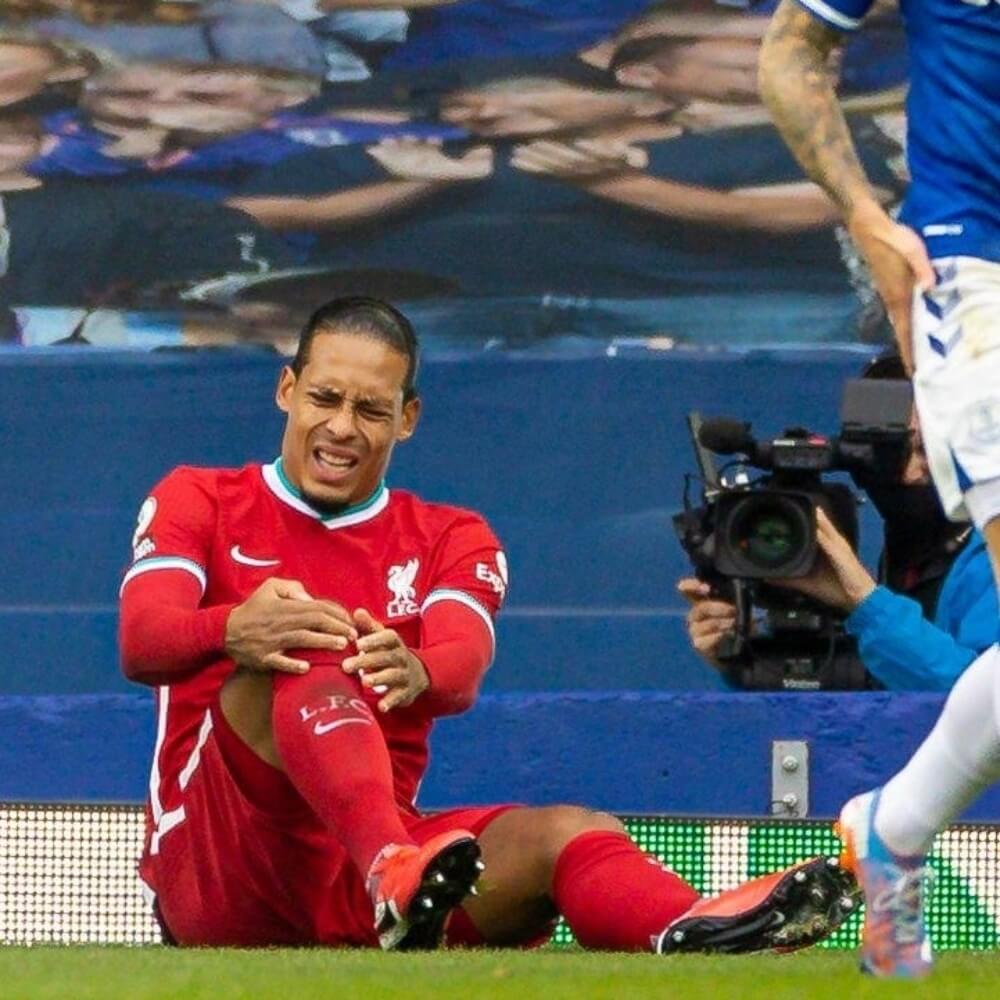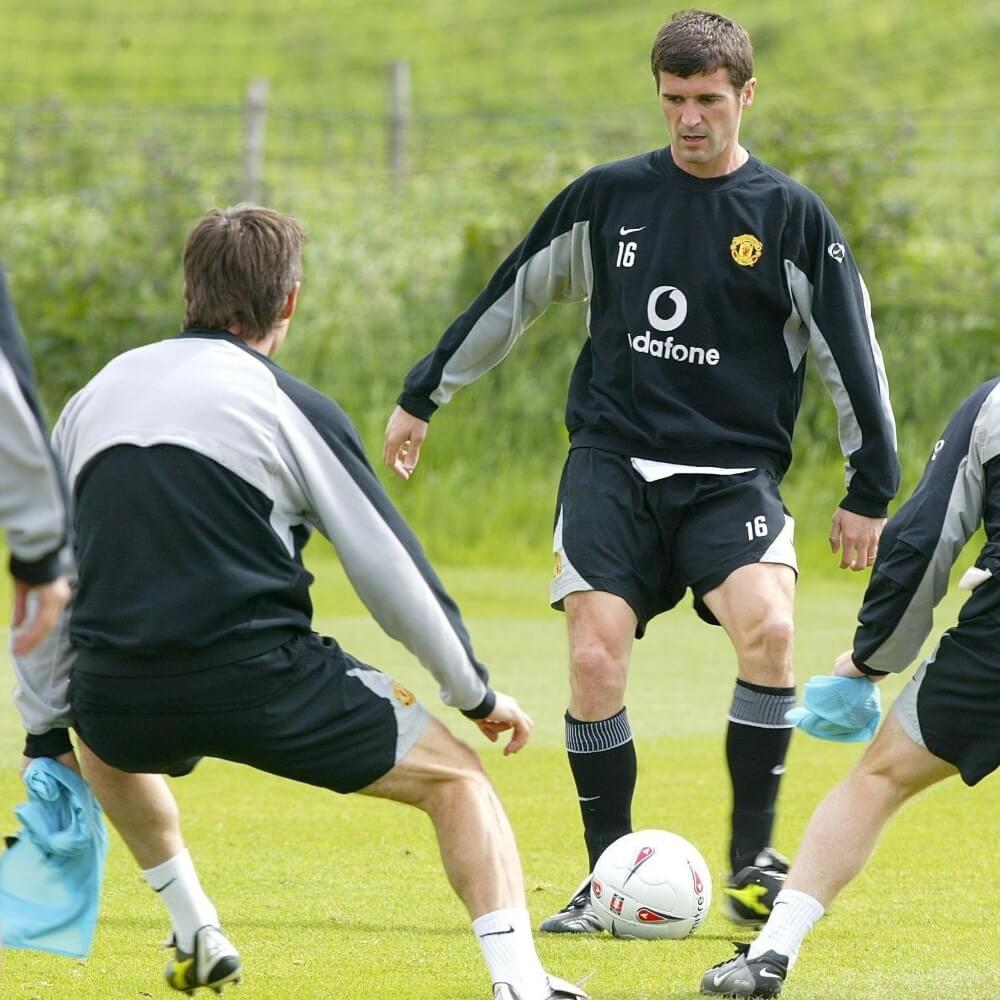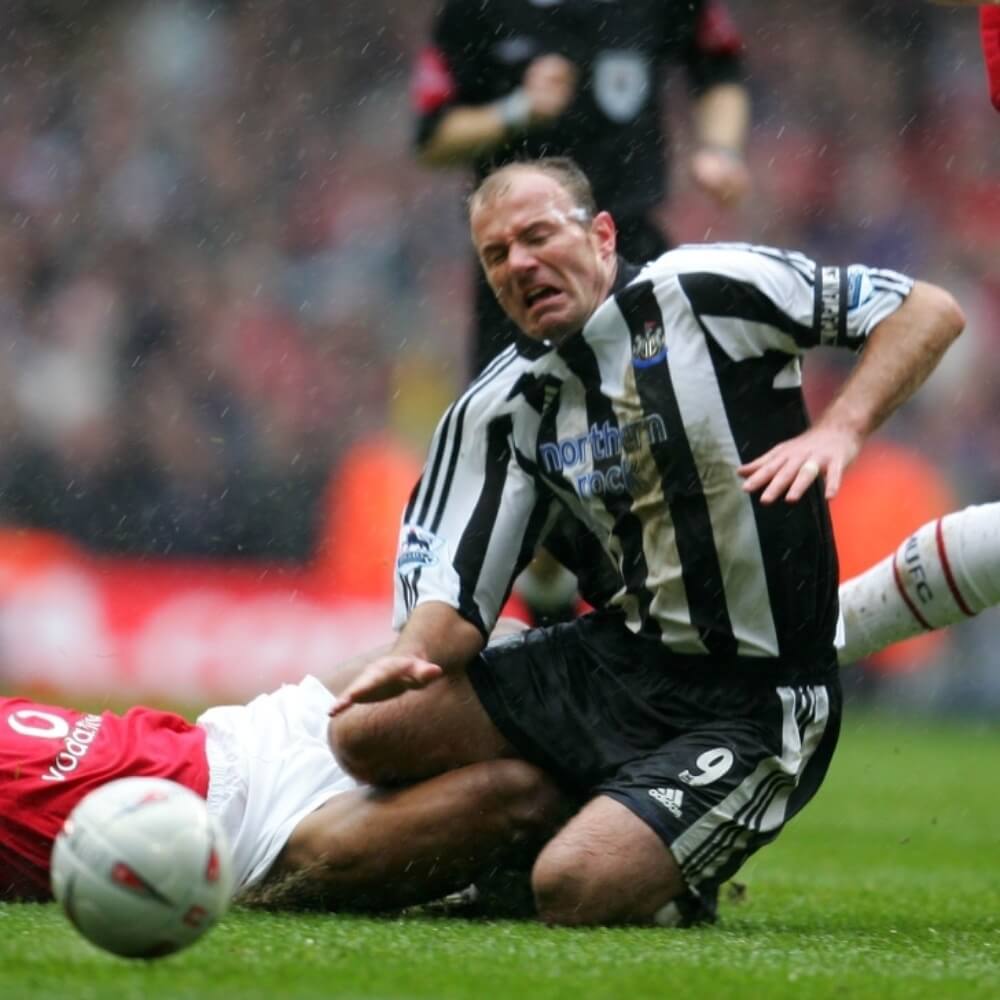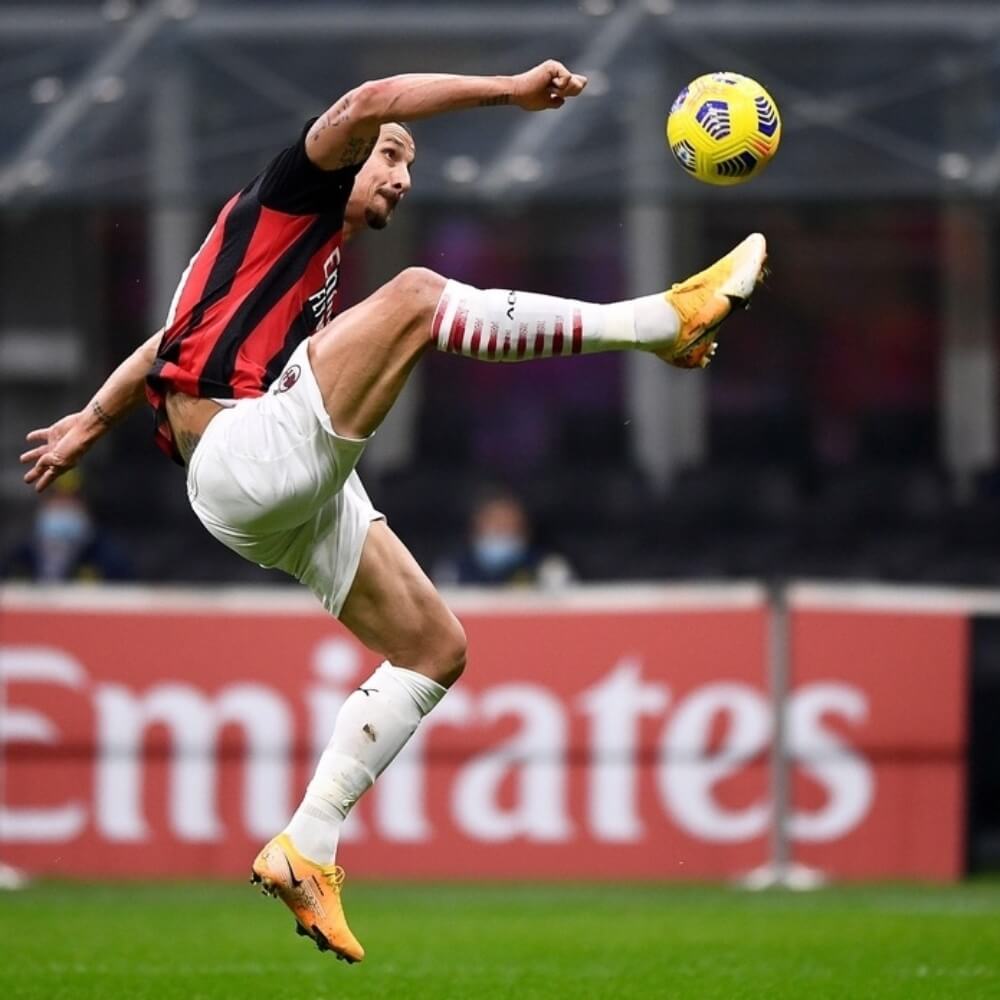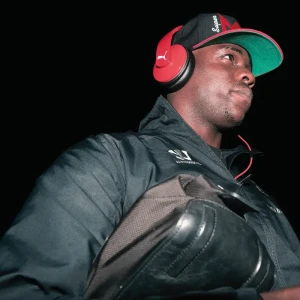Anterior Cruciate Ligament (ACL) injuries and footballers, the facts.
A famous football injury suffered by a number of high profile players over the years. An injury to the anterior cruciate ligament would've ended a player's career in the past. Leading orthopaedic surgeon, Professor Sanjiv Jari, explains how modern surgical techniques help footballers return to play quicker after an acl injury.
When did we start talking about anterior cruciate ligament injuries in football?
The ACL became known in football circles when England's Italia 90 hero, Paul Gascoigne of Tottenham, ruptured his anterior cruciate ligament in the 1991 FA Cup final. It was big news Gazza was about to join Serie A team Lazio in a multi-million-pound deal. The Italians reduced the transfer fee they offered because of the ACL knee injury.
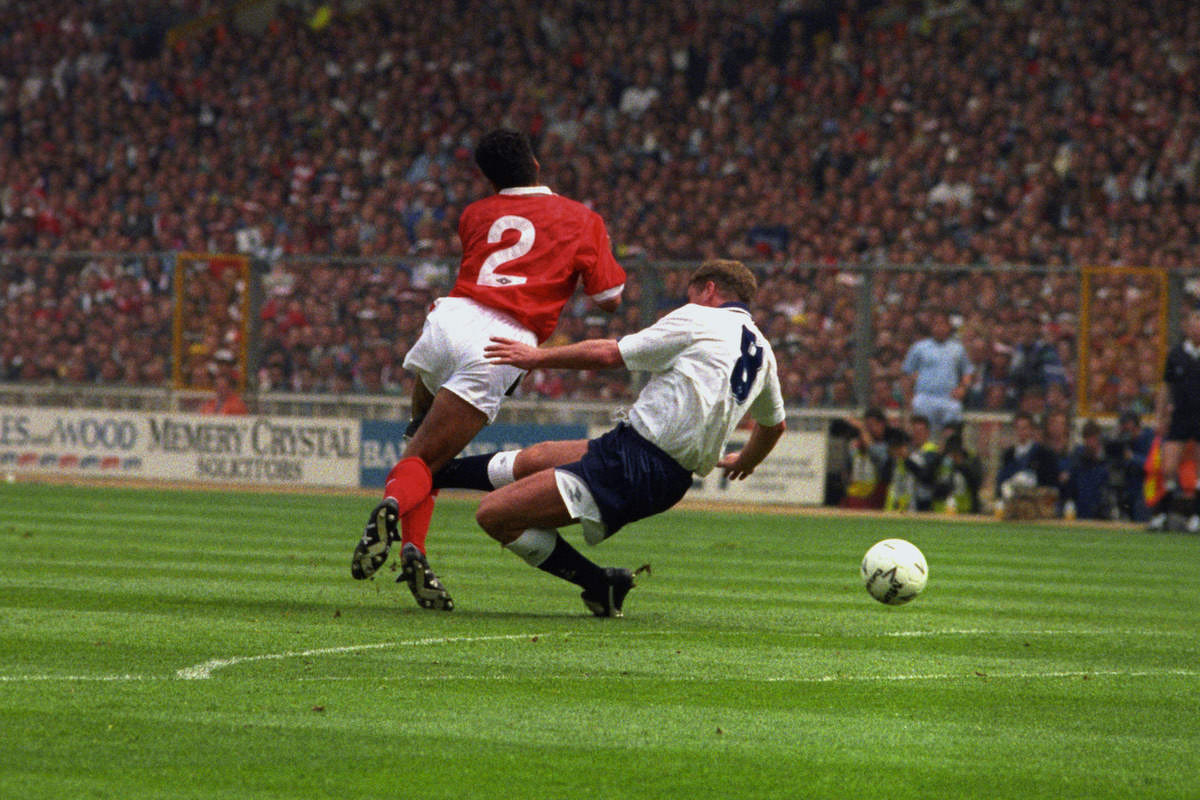
The anterior cruciate ligament (ACL) is a main stabiliser of the knee joint. It is the connection between the thigh bone and the shinbone allowing the knee to twist and turn as one piece. It's one of the most serious football injuries in the game.
The ACL also prevents excessive forward movement of the shin in relation to the thigh and extreme rotation at the knee joint. Located in the middle of the joint it sits next to the posterior cruciate ligament.
0 -
0
0
How do anterior cruciate ligament injuries happen?
Anterior cruciate ligament injuries happen a lot in sport, with football having more ACL incidents than others. Usually, when a footballer's anterior cruciate ligament 'goes' there's no one near them. Running with a sudden change of direction or an awkward landing have seen players end up on the ground in pain.
Nonetheless, there have been cases when an extreme force (a tackle high up) from the side to the knee has caused injuries to professional football players. This was the case when Virgil van Dijk suffered his knee ligament injury against Everton.
Because of the amount of force that is needed to damage the ACL it is not uncommon for other structures within the knee, such as the meniscus or medial ligament to also be damaged.

Statistics reveal anterior cruciate ligament injury risk is higher with female athletes. Injury rates show they are 2 to 7 times more likely to injure than male players. Experts & injury studies give different reasons why; some say it is because women have thinner ACL's, others say it could be down to how they land after jumping. There are now injury prevention programs put in place to combat the risk of anterior cruciate ligament injuries in women footballers.
How to tell you've injured the anterior cruciate ligament
Either way, when it happens, players have described a 'popping' feeling in the knee. In some cases, the person may feel able to continue playing but, as soon as the knee is put under strain during sports activity, the knee joint will become unstable. The reason the person is unable to carry on is that the control function of the ACL isn't there. The increase in rotation and forward movement of the shin in relation to the thigh, make the knee joint unsteady.

After a couple of hours, the knee joint will become painfully swollen due to what is called a haemarthrosis (bleeding within the joint). This swelling provides protection by not allowing the person to use their knee; if it persists though, it can cause complications during the rehab.
The cruciate can rupture when the ligament has only partly been damaged. A complete tear, on the other hand, will see it snapped in two. Most of the swelling goes, and a player with an injured ACL can usually walk. The knee can give way.
Why are all anterior cruciate ligament injuries not the same?
Immediately after the injury occurs and throughout the first 48-72 hours, an exact diagnosis is very difficult due to the swelling around the joint. The goals of acute physiotherapy treatment are to reduce knee pain and knee swelling.
Ice packs can be applied for periods of twenty minutes every couple of hours (never apply ice directly to the skin as it can cause an ice burn) to relieve pain and reduce bleeding within the tissue.

Once the initial treatment for the swollen knee has taken effect, a diagnosis can be made. This may be done with the medical personnel performing stress tests on the knee ligaments - the degree of laxity [looseness] within the joint allows the physician to estimate how much damage has happened.
If there is any doubt, or to confirm the clinical tests, the patient is sent for further investigations. Most commonly an MRI scan is used to check the seriousness of the knee injury.
However, in some cases, the MRI scan may not give a clear picture of the damage and it may be necessary to survey the joint with an arthroscope [camera inside the knee joint]. The combination of these findings allows the orthopaedic consultant to build a picture of the extent of the damage.
What's needed to repair the anterior cruciate ligament?
The treatment of the ACL injury depends on the severity of the injury and the subsequent functional impairment, the age of the patient and their level of sporting activity.
0 -
0
0
A study by the British Journal of Sports Injuries revealed some interesting facts and statistics about anterior cruciate ligament injuries in football -
Study period: 2001 to 2015
Number of teams involved: 78
Number of countries: 16
Players in the study: 10,157
Incidents: ACL injuries didn't go down during study period.
When it happens: ACL injuries x20 more likely in matches than training.
Surgery: 98.6% of players need full reconstructions with total ruptures.
Return to training: 7% of players suffered new injury problems returning to training.
Average time out: Return to training was 6.6 months and 7.4 months for match play.
Outcome: 85.8% returned to play. 65% competed at the highest level after 3 years.
If the diagnosis reveals only a partial tear of some of the fibres of the ACL, and there is minimal instability, then physiotherapy sessions and a knee brace can be sufficient.
In the case of individuals who are involved in a high level of sport where a degree of instability is functionally unacceptable, ACL reconstruction knee surgery is the surest way to restore normal function.

After-op rehab
ACL reconstruction knee surgery has evolved since the first ACL repair in 1963. The development has continued since then and the latest surgical technique sees a strip of the patella tendon from the patient's knee as a graft to replace the ACL.
In addition to advances in the surgery, there have been improvements in rehabilitation after operations. This has returned players to the pitch successfully, in some cases, in less than six months.
Final Note
A ruptured ACL is a big injury, but most players will recover from it because of improved rehabilitation and recovery understanding. While current studies give valuable insight, there are still gaps.
More research could answer the following:
Do footballers returning to competition achieve pre-injury performance levels?
What position & age of players suffer the injury more?
At what stage of the season do anterior cruciate ligament injuries happen most?
Answering these will go some way in preventing, reducing and managing anterior cruciate injury in football.

